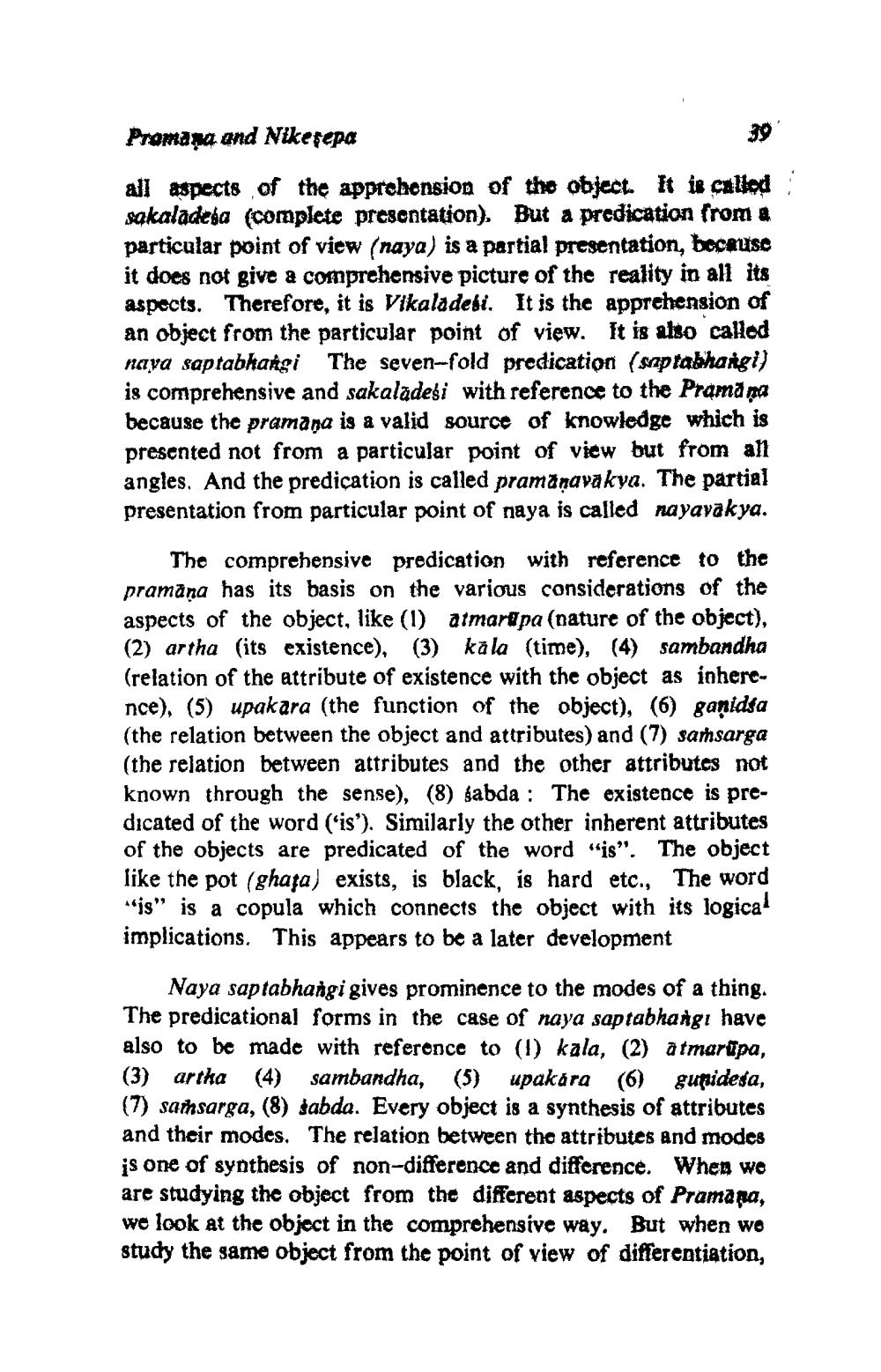________________
Proman and Nikefepa
all aspects of the apprehension of the object. It is called sakalaalesa (complete presentation)But a predication from a particular point of view (naya) is a partial presentation, because it does not give a comprehensive picture of the reality in all its aspects. Therefore, it is Vikaladebi. It is the apprehension of an object from the particular point of view. It is also called naya saptabhangi The seven-fold predication (saptabhangi) is comprehensive and sakaladeši with reference to the Pramā ma because the pramana is a valid source of knowledge which is presented not from a particular point of view but from all angles. And the predication is called pramänavakya. The partial presentation from particular point of naya is called nayavakya.
The comprehensive predication with reference to the pramana has its basis on the various considerations of the aspects of the object, like (1) armarapa (nature of the object), (2) artha (its existence). (3) kala (time), (4) sambandha (relation of the attribute of existence with the object as inherence), (5) upakara (the function of the object), (6) ganidsa (the relation between the object and attributes) and (7) samsarga (the relation between attributes and the other attributes not known through the sense), (8) sabda : The existence is predicated of the word ('is'). Similarly the other inherent attributes of the objects are predicated of the word “is”. The object like the pot (ghaja) exists, is black, is hard etc., The word "js" is a copula which connects the object with its logical implications. This appears to be a later development
Naya saptabhangi gives prominence to the modes of a thing. The predicational forms in the case of naya saptabhangı have also to be made with reference to (1) kala, (2) a tmarüpa, (3) artha (4) sambandha, (5) upakara (6) gupidesa, (7) samsarga, (8) sabda. Every object is a synthesis of attributes and their modes. The relation between the attributes and modes is one of synthesis of non-difference and difference. When we are studying the object from the different aspects of Pramana, we look at the object in the comprehensive way. But when we study the same object from the point of view of differentiation,




